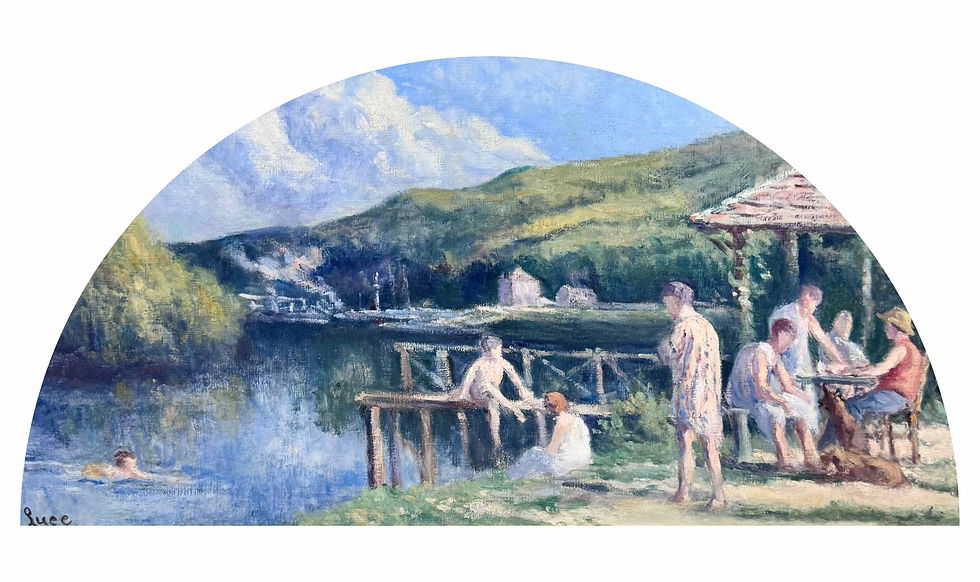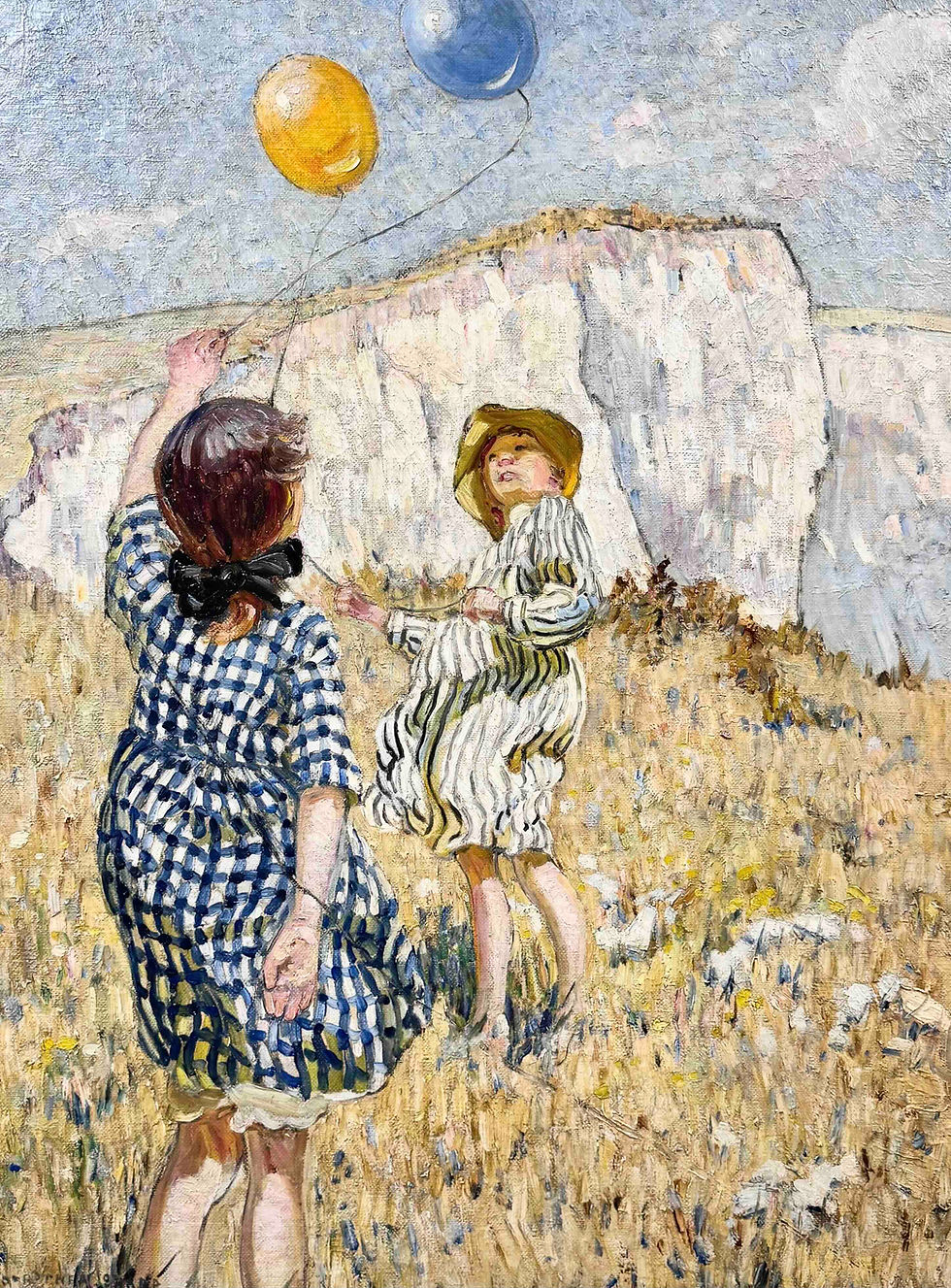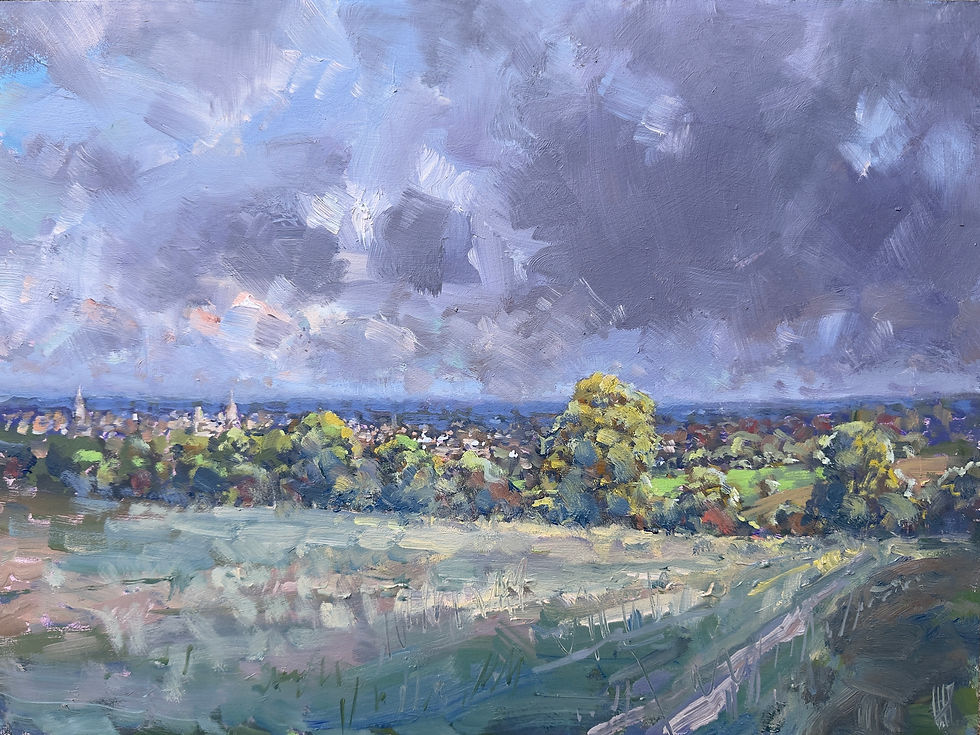SIR ALFRED JAMES MUNNINGS | A Huntsman and Hounds, Painted in 1906
Oil on Canvas
40 x 50 cms / 15¾ x 19¾ inches
Signed and dated Munnings 06 (lower left)
Painted in 1906, Huntsman and Hounds represents one of the most important early paintings by the leading british artist, Alfred Munnings. One of the artist's most impressionistic works with fluid brushwork and expressive colouring, this portrayal of animal movement belies the traditional narrative that Munnings was an artistic reactionary. A work that showcases both the artist’s natural ability and experimental approach often lost in his later paintings. One of Munnings's only paintings to depict the horse ‘head on’, this work is a brilliant study of forward movement and fluid texture.
The above picture was painted in 1906, when Munnings was 28, and depicts a huntsman surrounded by his scampering, eager dogs as they together travel down a path in the Norfolk country side. At the time, Munnings was living and working in Swainsthorpe, five miles south of Norwich, where he had persuaded his aunt Polly Hills to rent part of Church Farm for the princely sum of £10 per annum. Here Munnings decided to build a studio in the grounds and began to gather a small band of ponies, horses and donkeys to serve as models for his works. He would remain at Church Farm for some time and work in the surrounding areas but later on decided to he invest in a blue caravan that would serve as a mobile studio enabling him to travel the Norfolk country side in the company of his ponies, horses and one or two friends.His love for the East Anglian landscape and its rural pursuits was further enhanced after a visit to a horse fair in 1901. The enthralling world of gypsy travellers as well as that of hunting and horse racing offered Munnings a wide range of subject matter that would tie in with the landscape and horses. Having already gained recognition through his two exhibits at the Royal Academy in 1899, Munnings was keen to explore new approaches. A Huntsman and his Hounds is one of only a handful known works depicting the horse and rider ‘head on’. He usually opted for a side angle. In choosing a more complex compositional approach Munnings may have been inspired by Lucy Kemp Wech’s Colt Hunting in the New Forest, now in Tate Britain, painted some 9 years earlier and certainly led to several further works with a similar composition as in Hunting Moring, 1913, now in the Munnings’ Museum in Dedham.The picture exudes energy with the lively foxhounds and their patchwork variety of brown, white and black markings scampering at the feet of the red coated rider as they all move through a loosely depicted woodlands. The low sun is filtering through and catching the whites of the hounds’ coats. Munnings was an entrenched traditionalist that later would take a strong stand against ‘Modern art’ but here his style is clearly influenced by the Impressionists with its flickering light and quick, expressive brushstrokes. This indicates clear influences from a previous visit to Paris in 1902 when he saw and admired the work Degas Fantin-Latour and Sorolla. Like Sorolla, he was an avid open-air painter.

















